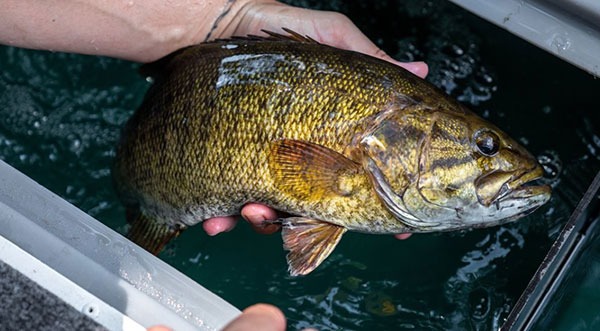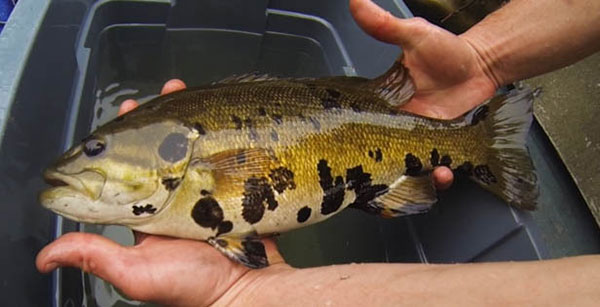- Details
Mercury Report
 Smallmouth bass
Smallmouth bass
Catch and release is one of the best aspects of bass fishing. The entire culture is built around this principle, with recreational and tournament anglers alike tossing back most of the bass they catch.
For the concept to work, it goes without saying that the fish must live. We owe it to the resource to ensure that the fish we handle, photograph and weigh in fight again to thrill another angler in the days ahead.
The first step in this principle is learning how to care for bass being held in a livewell. It’s not as easy as just filling the tank with water and dumping in keepers. Let’s dive in, so to speak.
Your livewell fills with lake water – the same water harboring your bass – but from the perspective of the fish, the similarity ends there. The instant fish are held in captivity both their biological makeup and the water itself change.
When held in a livewell, bass secrete an extraordinary amount of waste product into the water, mainly in the form of ammonia and carbon dioxide. This is due to a combination of respiration (breathing) and stress. As this waste enters the water in the livewell, the water begins to change, slowly becoming toxic to the fish held within.
- Details
Mercury Report
 Greg Hackney
Greg Hackney
Greg Hackney is an independent thinker. Over two decades of professional fishing, the Mercury Pro Team member has learned to trust his gut over going with the flow — unless he’s dealing with actual flowing water.
In that case, Hackney knows that current remains one of the most predictable powers influencing where, when and how bass position. The Bassmaster Elite Series veteran recently shared his thoughts on strategies for finding and catching current-oriented bass.
1. Consider Seasonal Patterns
Current-related patterns vary by season. During most of the year, bass take advantage of the flowing water to forage, as the current helps deliver food. In spring, this holds true in the prespawn and postpsawn periods. However, in between, Hackney expects to find bass moving away from the heaviest current to spawn. Where this occurs depends on the fishery.
“With river fish that live in current, there’s no migration. They may live out on main river bars, and they literally just go to the bank to spawn,” he said. “Whereas, in southern Louisiana, the fish will run away from the current and spawn in the backs of canals where the water is warmer.”
While spring rains and snowmelt often bring heavy flows, the summer months typically see less water volume moving through river systems.
- Details
IDNR Report
 Blotchy bass
Blotchy bass
If you have been bass fishing more than just occasionally, it’s likely you have caught a bass that had black botches on its body.
Scientists call it “Blotchy bass syndrome (BBS),” the occurrence of black ink-like spots (hyperpigmentation) on the skin, fins, and/or mouths of freshwater bass species.
Researchers once thought that melanosis was caused by sun exposure or stress related to fishing, temperature, or pollution; however, researchers recently discovered that a family of viruses was associated with the black spots in fish that were in poor body condition.
The Division of Fish & Wildlife is partnering with the United States Geological Survey (USGS) to collect samples from black bass species to test for BBS and needs your help. DNR encourages anglers to report observations of affected bass when you are fishing, so they and USGS can learn more about the effect of this family of viruses.
How to participate:
- Download the MyCatch app from Angler’s Atlas.
- Register for the “Blotchy Bass Bonanza.”
- Take photos of all the bass you’ve caught (preferably on a measuring board) while fishing and upload them to the MyCatch app.
The Blotchy Bass Bonanza runs from March 1, 2023 —Feb. 29, 2024. The Indiana DNR is not associated with the MyCatch app or the Blotchy Bass Bonanza.





